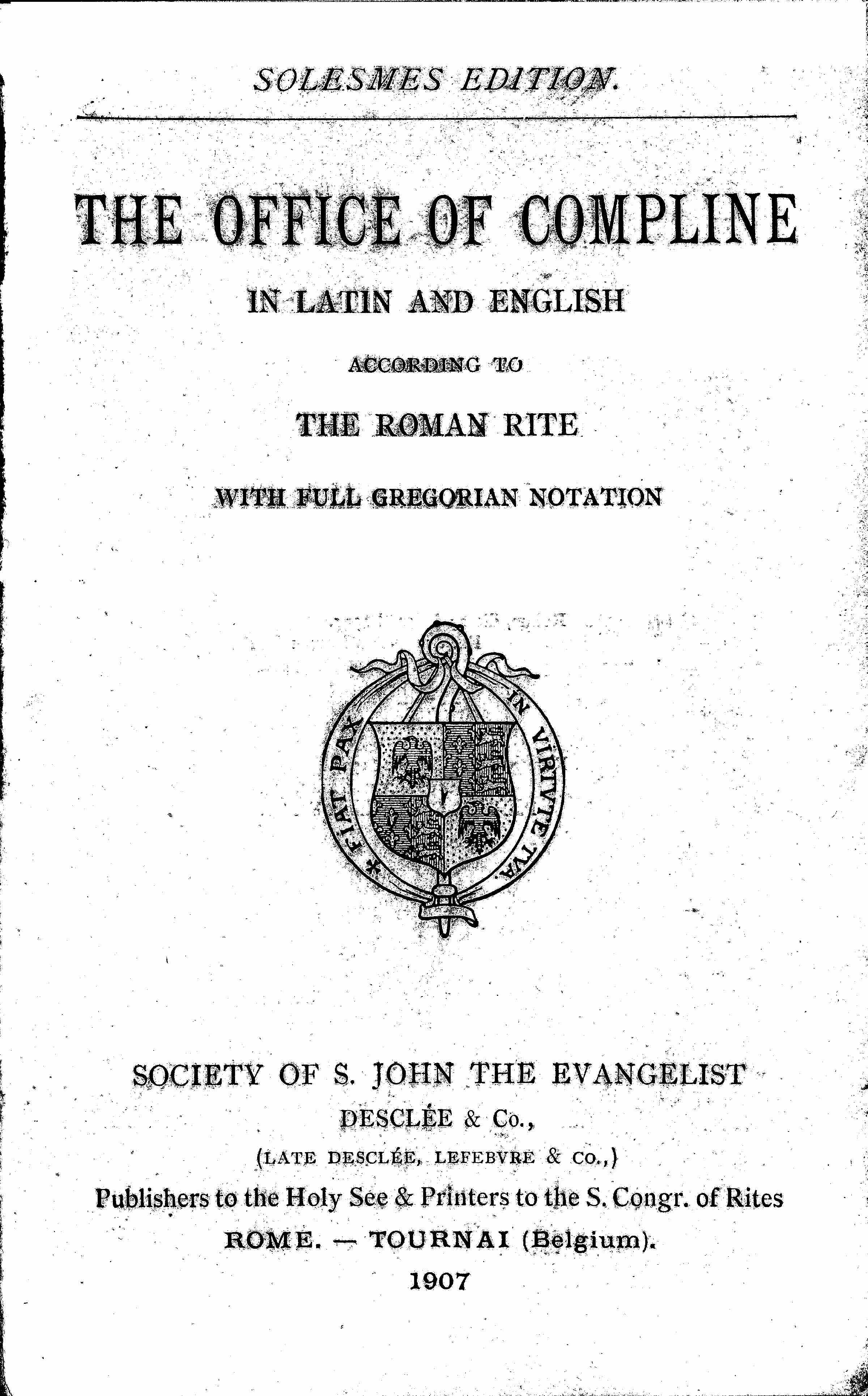The 1890's
-
Pottering about online, I have been surprised by the flourishing of "Pothier-style" chant editions that was apparently going on in the 1890's, as well as the availability of these online.
To wit :
1891 Liber Antiphonarius (juxta ritum monasticum)
1891 Liber Antiphonarius (pro vesperis et completorio officii Romani)
1891 Librii Antiphonarii Complementum (pro laudibus et horis)
1893 Processionale Monasticum
1895 Liber Responsorialis
1895 Liber Gradualis
Some of these books (LR & Pr.M.) as far as I can tell have never been "updated" and remain the only source for these chants. With others I realized that here we have "modern chant books" for the mysterious pre-Pius X office.
Interestingly, from the few things I have compared in these books, it seems that at this time the Roman/Monastic differences that are present in the 1912 Roman / 1934 Monastic Antiphonale's have not yet appeared. Of personal interest, with these books I am pretty sure that all the chants for the Little Office are covered, including Matins.
Anyhow, since I have been finding all of this fascinating, I thought I would shove up a post in case it would be of use to anyone here. I might also add - hat tip to Mr. Ostrowski for his insistence on the importance of Dom. Pothier and the 1908 Graduale = validity of editions without Solesmes markings.
Vale in Domino,
Jonathan
-
These 1891 books are some of the sources for Charles Tournemire's l'Orgue Mystique suites.
-
Thank you very much Jonathan, I did not know about the 1891 L.A. / Supplement for Lauds and Minor Hours. Now added to the list:
http://www.gregorianbooks.com/gregorian_books.html
Question to the Latinists: I suppose the book is called "Librii" and not "Liber" as the genitive of "Complementum"...?
---------------
When you look at these old books you can only be amazed by the quality of the neumes, very neat and precise. Not to mention the quality of the books. Just remember the melodies might have changed then officialized by the Vatican in 1908 for the Graduale and 1912 for the Antiphonale.
---------------
The 1893 Processionale Monasticum was not updated but it was reprinted in 1998 with manuscript neumes added to several pieces from the Hartker Antiphoner (St. Gall MSS 390-391). This recent book is still sold by Solesmes.
http://www.solesmes.com/GB/editions/livres.php?cmY9MTQ0
---------------
There were differences in the psalms schemas between the Monastic and the Roman Breviary, even before the Pius X reform in 1912 for the Roman Breviary.
and... kellerbook.com seems to be down so here is a backup copy:
http://www.gregorianbooks.com/gregorian/www/www.kellerbook.com/INDEX.HTM
(not all the links work...)
Psalter schemas:
http://www.gregorianbooks.com/gregorian/www/www.kellerbook.com/SCHEMA~1.HTM
Monastic psalter:
http://www.gregorianbooks.com/gregorian/www/www.kellerbook.com/Monastic.htm
Roman psalter pre-Pius X:
http://www.gregorianbooks.com/gregorian/www/www.kellerbook.com/PRE-19~1.HTM
Roman psalter Pius X
http://www.gregorianbooks.com/gregorian/www/www.kellerbook.com/1911-1~2.HTM
-
I see more overlap with the Pre-1570 tridentine secular use in the pre-1911 books, they had more in common before 1911 than after.
Dr. William Renwicks .pdf's of the office and gradual from 1534 salisbury use retain a number of the notation styles and specific chants that existed around 1900 that were removed or "updated" after about 1911 (or was in 1913?).
Before 1911 there was a little more historic "purity" in some of the chant books, they had less tinkering with them. That should not be surprising. The dominicans office books were always more historically pure too, the main thing they lost was a few extra feast days or the ever Virgin Mary and Our Lord Jesus Christ sometime in the 1920's...
(my view is that the late middle ages is the apex of church music tradition for the west.)
This can be seen on the "1909 Dominican Calendar (from Breviarium S.O.P.)"
http://docs.google.com/file/d/0B3WVbjT8WrguV3plUkJCblE1LTQ/edit?usp=sharing&pli=1
Welcome to the MusicaSacra Forum!
To participate in the discussions on Catholic church music, sign in or register as a forum member, The forum is a project of the Church Music Association of America.
Categories
- All Discussions21,111
- General Music Discussion8,219
- Job Openings197
- Management of Music Programs850
- Choral Matters533
- Church Documents and Rubrics524
- CMAA Notes302
- Events716
- For Newcomers: Read First26
- Sacred Polyphony546
- Hymnody872
- Gregorian Chant: General2,698
- ↳ Graduale Romanum and Liber Usualis368
- ↳ Graduale Simplex60
- ↳ Semiology63
- Vernacular Plainsong696
- Anglican Use and Anglican Chant68
- Organ, Other Instruments and Repertoire435
- New Composition/Works in Progress1,291
- Recordings232
- Music for Hispanic Ministry159
- Music Education: Children211
- Music Education: General222
- News Items245
- Positions Wanted2
- General Discussion: Catholicism739
- Amusements177
- General Discussion1,034
- Opinions117





